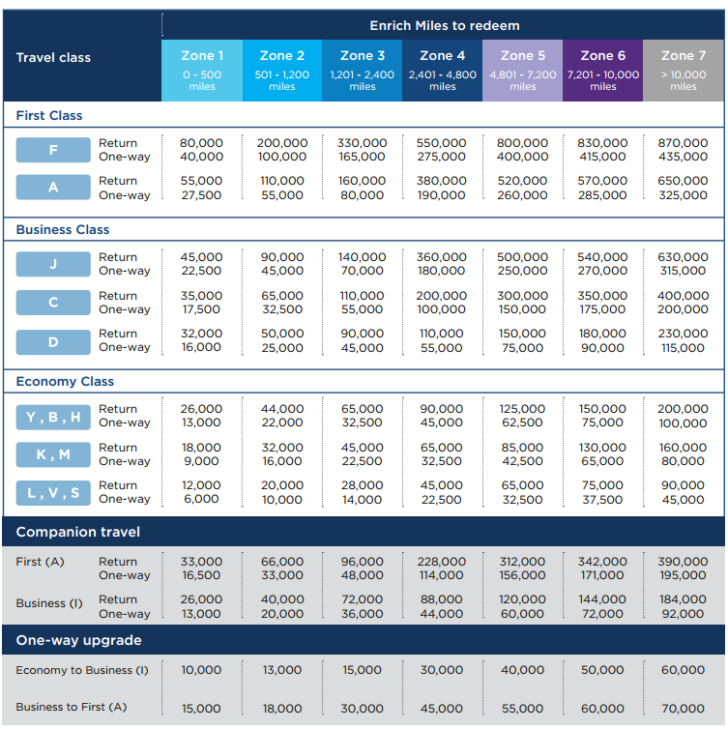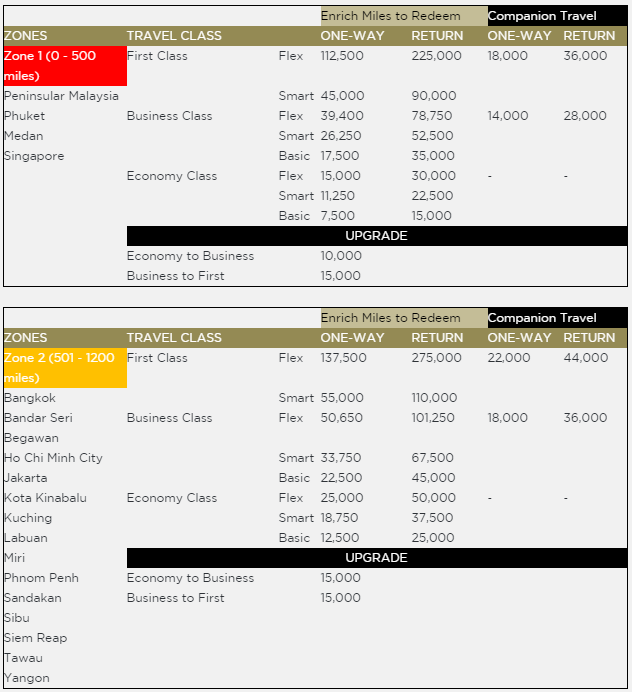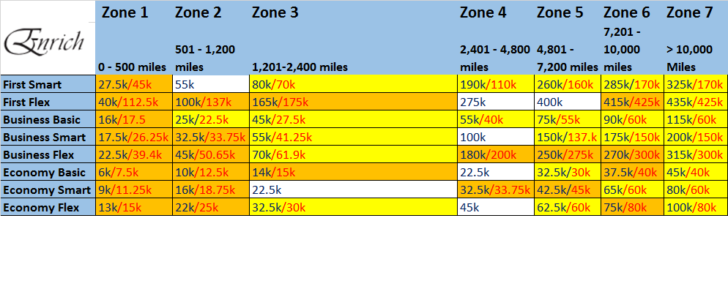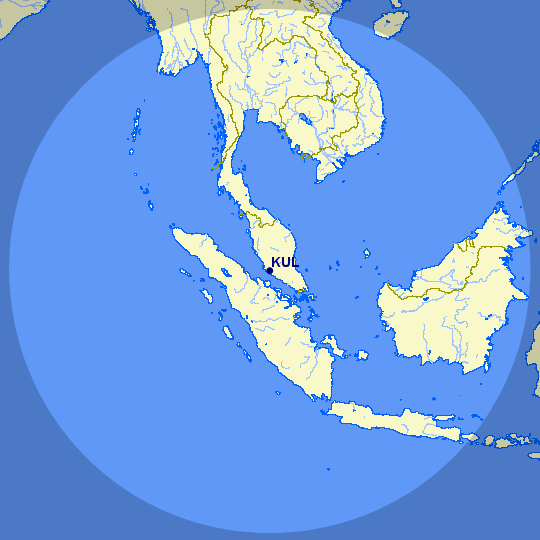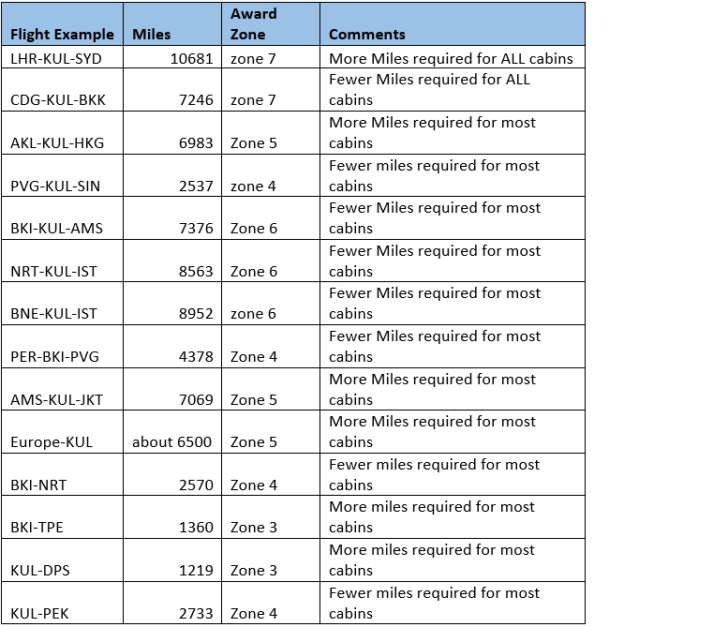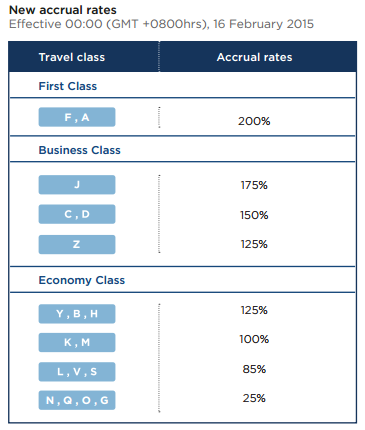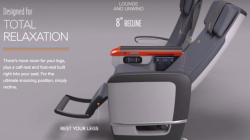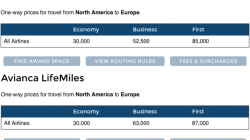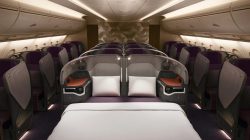Malaysia Airlines is currently in the middle of a restructuring plan and is trying to regain passenger’s trust after two major disasters in 2014. As the airline restructures, they are attempting to make their Enrich Frequent flyer program more enticing in hopes that more flyers will choose their airline over the competition.
Last week I received an email from Malaysia Airline informing me that the Enrich program would be introducing a new award rate calendar and earning rate for flights booked on or after February 16, 2015 and the new award calendar and earning rates would only affect Malaysia Airline flights
“We love giving you the gift of travel via your Enrich Miles and this gift keeps on giving in 2015. We are revising our accrual rates for flights marketed and operated by Malaysia Airlines.
The new accrual chart will take effect at 00:00 (GMT +0800hrs), 16 February 2015. The changes you can look forward to will include accruals up to 175% of the flight distance for Business Class.
The new redemption chart will only apply to Malaysia Airlines flights, excluding codeshare and marketed flights. All redemption tickets issued from 00:00 (GMT +0800hrs), 16 February 2015 onwards will be based on the new redemption chart. Zones 1 and 2 now require fewer miles – one-way redemptions start from as low as 6,000 Enrich Miles – great news for short-haul travellers! We are also introducing Zone 7 – you can use your rewards to fly to a wider network and farther destinations with Malaysia Airlines.”
Malaysia’s announcement is an interesting development as in some aspects they are making awards cheaper, but at the same time they are increasing the costs of ultra long haul awards and decreasing the mileage earning ability for discount economy passengers. On the surface it all looks bad, but upon further investigation I found that are lot of the changes are for the better!
New Award Chart
The new award chart includes 7 zones, which is an increase from the current 6 zones. The new 7th zone is for flights bookings which are greater than 10,000 miles meaning flights from Europe to Sydney via Malaysia will now be included in zone 7. Previously, someone could travel from Australia to Europe with a Zone 6 award, or even from Europe to Los Angeles via Southeast Asia before service was discontinued, as Zone 6 was 7,201 miles or greater.
The new award chart doesn’t look so bad, but it’s also somewhat confusing and hard to compare to the old award chart as they are not laid out in similar formats.
New chart above, a sample of the old chart below
To help with the comparison of the old and new award chart I created a comparison chart. The new one-way award rates are listed in navy blue with the old award rates in red next to the new rate. The boxes with only one award rate have no change in redemption price. I further color coded the chart to make it easier to see what awards cost more and what awards cost less under the new program. An orange fill means the price of an award dropped, whereas a yellow fill means the price increased. A white fill means there was no change.
Overall 25 award prices increased, 24 award prices decreased, and 7 awards redemptions saw zero changes. Tickets within Southeast Asia now cost fewer miles however the medium and long haul flight prices significantly increased. The silver lining is the new zone 6 awards decreased in cost, except for First Class Saver Awards. Zone 6 covers many long haul nonstop awards with travel beyond KUL, but would awards from eastern Australia or New Zealand to much of Asia. The new award chart makes Zone 6 long haul awards cheaper, when connecting in Kuala Lumpur except in the instances of connecting from the South Pacific to Europe.
1200 mile radius from KUL would be all flights include all flights in Zone 1 or 2
The downside to the award chart change is zone 5, which includes trips that are 4,801 – 7,200 miles in length. The new award chart increases every award type in Zone 5 from current levels and includes long haul destinations such as London, Paris, and Auckland to/from KUL and a number of connecting destinations within Southeast Asia when connecting via KUL from Northern Asia and the South Pacific. So whereas ultra-long haul destinations are cheaper under the new award chart, the cream of the crop and most common rewards type for leisure travel outside of Southeast Asia are increasing in costs!
Here is a sample of a few MH routes and their zone and the effect it will have on prices. You may be surprised!
The entire award chart change isn’t horrible, and the changes are fairly good for frequent flyers based in Southeast Asia traveling within their own region. The changes will hurt those looking to redeem miles to further away destinations and those traveling in Zone 5 and 7 the most. In addition, it’s important to remember that flights within Southeast Asia are already extremely discounted due to increased competition from low cost carriers, therefore redeeming miles for trips within the region is not a good use of miles.
SUMMARY OF AWARD CHART CHANGES
- 7 award zones instead of 6
- 22 award prices increased
- 27 award prices decreased
- 7 awards redemptions saw zero changes
New Mileage Earning Rate
With the announcement of the new Award Chart, Malaysia also announced they would be changing the amount of miles the airline awards customers for flying. Except for customers traveler on promotional tickets and extremely discounted tickets, the new mileage earning rates are actually improving. The new rates clearly favor those who pay more for their tickets, but this is a common industry trend.
Here are the new earning rates:
To summarize the earning changes from current levels
- First Class Fares (F & A) will continue to earn 200% miles
- Full Fare Business Class (J) will increase from 150% to 175%
- Business Class fares C & D will continue to earn 150% miles
- Discounted Business class fares (Z) will decrease from 150% to 125%
- Full Fare Economy and Last minute fares (Y, B, M) continue to earn 125% miles
- Economy Class fares (K & M) continue to earn 100% Miles
- Discount Economy Class fares (L, V & S) earning increases from 75% to 85%
- Deeply Discounted Economy fares (N, G, Q, O) decreases from 50% to 25% earning rates
7 fare classes are not effective by this announcement, 4 fare classes will earn more miles than they currently do, and 5 discount fare classes will earn less miles.
Overall the changes are net positive for all customers, except for those flying on deeply discounted economy class and discounted business class tickets. Despite the changes, the mileage earning rates are still higher on Malaysia Airlines than some of their Asian competitors such as Singapore Airlines who only rewards first and business class passengers with 150% and 125% miles respectively and just 10% of miles for deeply discounted economy tickets or 100% for full fare economy tickets, and 50% miles for all other economy class fares!
Although some individuals may disagree with me, I think when looking at the changes Malaysia Airline is making to their program to be a net positive. After all, more fares are earning more miles and more reward redemption are decreased in cost than increasing. If this isn’t a win, I honestly am not sure what is. In addition, do not forget that Malaysia Airlines allows 1 free stop over on a one-way award, making this program even more valuable!
I personally do not credit miles to Enrich, but they are a transfer partner of Citi and could be a good option for individuals residing in the region or who fly Malaysia Airlines often. I have flown both regional flights and long haul flights in First, Business, and economy on MH and have always been impressed by their service and inflight product. Although I haven’t wrote my MH A380 First class review from last November, I confirm that their long haul First class product is top notch!
What do you think of the changes? Are you any more likely to credit miles to this program or use their Frequent Flyer programs? These changes definately beat the changes we’ve recently seen to Frequent Flyer programs in North America!


